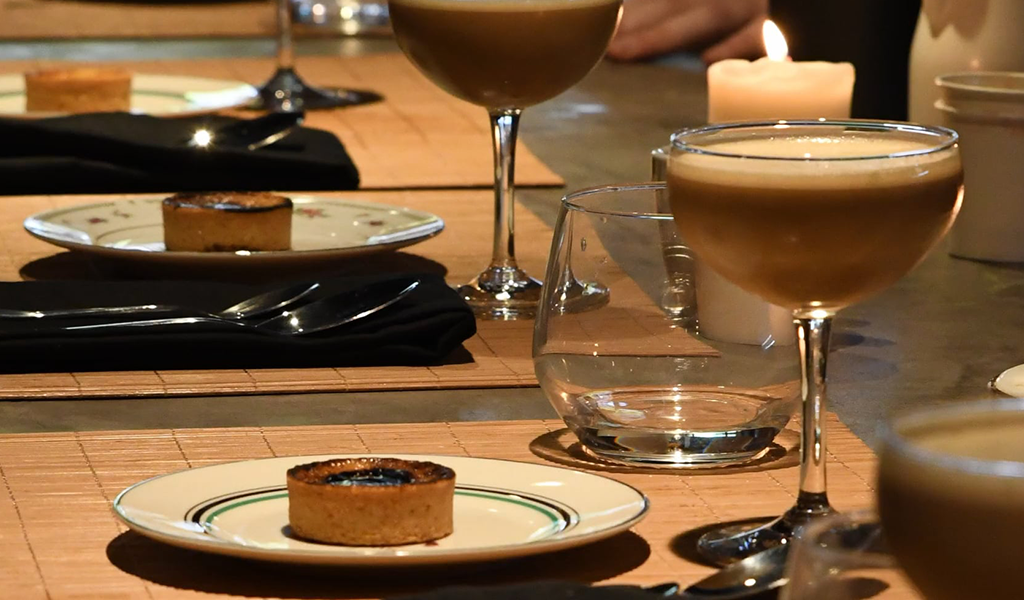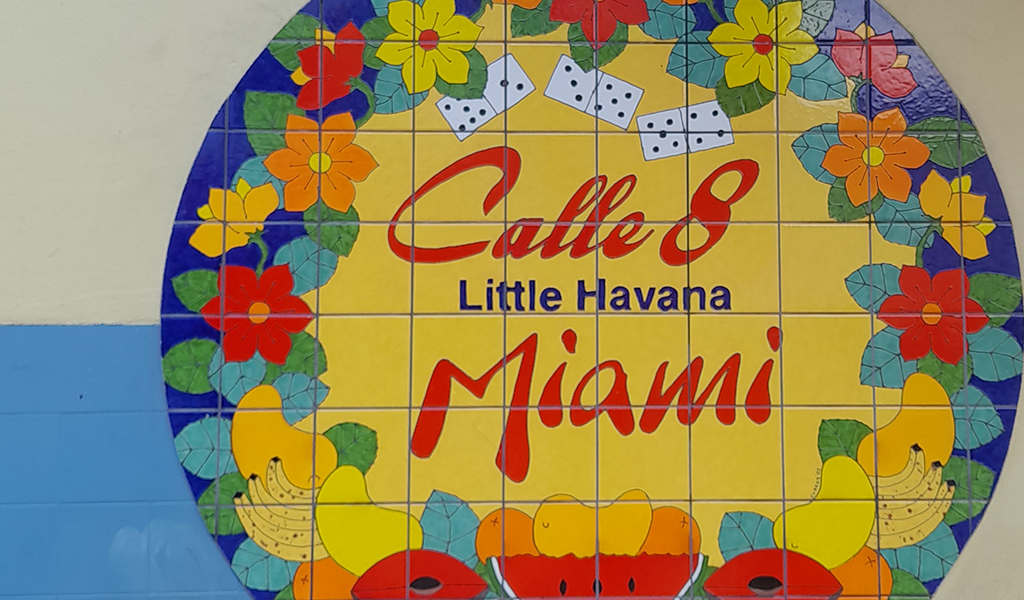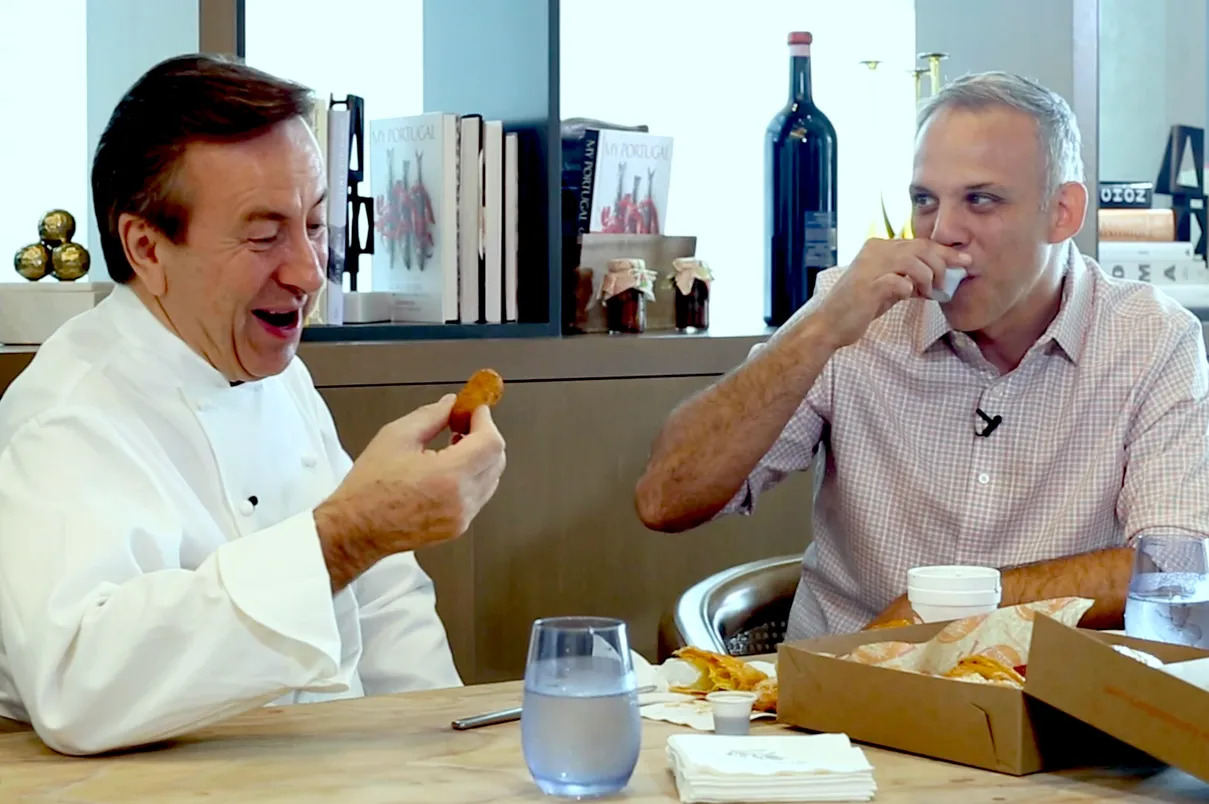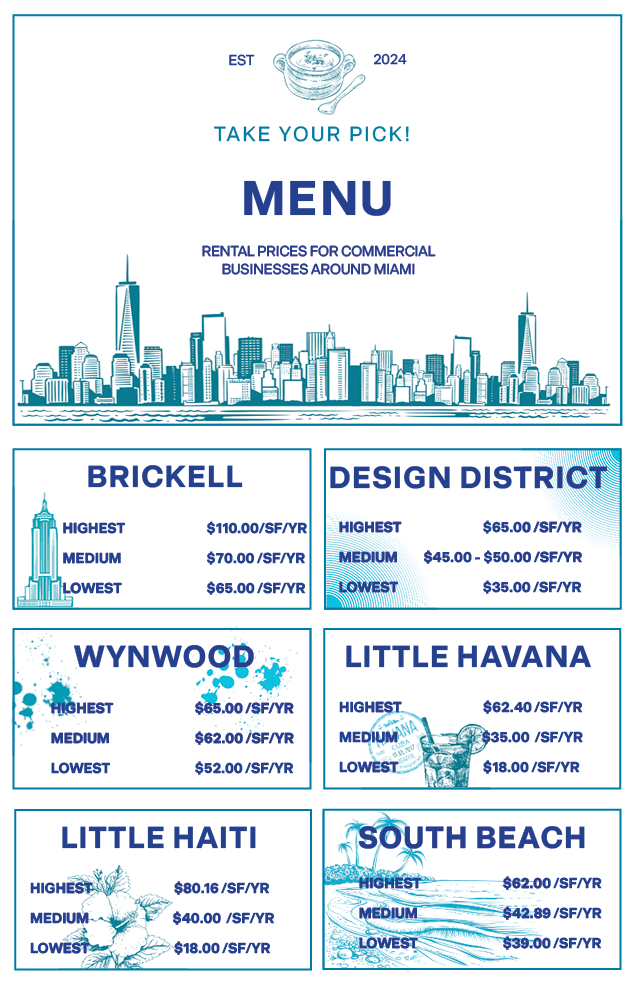A Taste of Home
Food is more than just sustenance in Miami. It is a way to connect, share stories and build community.

Published on May 30, 2024
Food is more than just sustenance in Miami; it’s a way to connect, share stories, and build community. This project explores the evolution of the city’s food culture, particularly the intersections of authenticity and innovation.
Our rendezvous through the picturesque neighborhoods of South Florida have led us to encounters in restaurants and eateries with locals and newcomers alike. To give you a taste of Miami, take a look into our City Food Guide where we rounded up a selection of these spots per recommendation and experience. Of all the people and places we crossed paths with, a well-rounded project came to fruition focusing on five businesses that range from family-owned restaurants, to long-established food companies and community food festivals. Furthermore, we shared insightful conversations with both an industry expert and a Gen-Z culinary entrepreneur.
Miami’s culinary landscape is a testament to its diversity and the rich tapestry of cultures that call this city home. From traditional dishes to contemporary fusion, the stories shared throughout the next three chapters take you on a flavorful journey around an ever-flowing, ever-transforming city.
The world is never as big as it seems. From nine different countries, all the members and protagonists of this project have ended up in the same place: Miami.
Happening
Sombreros, tobacco, mojitos, Celia Cruz. There is no doubt that Little Havana has become the hotspot for Cuban culture representation in Miami, with hundreds of tourists visiting the famous Calle Ocho every year. The walk through the street is filled with restaurants that provide an immersive experience of live music and Cuban food; this aspect has led to wondering if Little Havana has lost some of its true purpose of being a meeting point for the community, and perhaps has given more priority to developing the performative appeal catered for tourists.
This chapter delves into two notable establishments: The Latino supermarket El Nuevo Siglo, which is vastly popular among the locals, and Old’s Havana, a restaurant that has transformed into a tourists’ favorite while retaining the tradition and flavors of Cuban food.

Food has always been a powerful expression of tradition and culture. In one of Miami’s most visited streets, Calle Ocho –at the heart of Miami’s Cuban community– various restaurants balance themselves between local customers and passing tourists. Some place their focus on the outsider’s experience, and others, seek to maintain their reputation as hidden gems that serve good food for more affordable prices, making it accessible for people in the community that live or work around this bustling, signature street of Little Havana.
That is the case of El Nuevo Siglo Supermarket: what at first glance appears to be an inconspicuous store, hides an open-kitchen eatery inside serving fresh, homemade food with Cuban tradition. The founder, Pedro Jaime, also known as Paco, is a Cuban immigrant who moved to Miami in 1996 and opened the shop in 1999.
The beginnings of the store were not easy. Paco and his business partner Octavio Gallardo, a Colombian immigrant, struggled to turn El Nuevo Siglo into what it is today. As Paco explains, their small business has grown into an establishment that has between 30 and 40 workers. It has become a place where locals are able to eat food that reminds them of their homelands in Latin America.
But what makes El Nuevo Siglo a place worth revisiting? Paco affirms that it all comes down to the food preparation and a special characteristic the restaurant has: the food is cooked right in front of the clients. These two components, Paco says, make it reminiscent of eating at a family member’s home back in Cuba, and encourage conversation and connection between the cooks and clients as well. The meals are made based on traditional Cuban recipes which haven’t been changed in order to adapt to an Americanized palate. In a street as touristic as Calle Ocho, El Nuevo Siglo is appreciated by locals and visitors alike because of the distinct Cuban quality they transmit in their food, flavors, and environment. Paco explains how tourists are also captivated by his store and how when they get back to their countries they post recommendations on different platforms.
Preserving the essence of Cuban culture doesn’t mean it can’t also be shared. On Calle Ocho, as you stroll along the domino tiles, listen to boleros, and watch the bubbling mojitos in people’s hands, you can find venues that aspire to expand far beyond the local clientele. As Little Havana locals tell us, restaurants like Old’s Havana continue to honor the culinary heritage of Cuba, while still managing to attract travelers from all over the world.
“Our food defends and represents what home is: the flavors we remember when we arrived from school, from work; the food from our grandmothers and mothers.” That is how Manuel Alejandro, manager of the restaurant Old’s Havana, describes the food served at the restaurant, Old’s Havana. Located in the heart of Calle Ocho in Little Havana, this eatery has been transporting its customers to the Cuban atmosphere of the 1940s and 1950s with the use of music and performances since 2016.
Crossroads
In a city as culturally diverse as Miami, home to nearly half a million people of more than 10 different cultures (Torres, 2020), it’s not rare to find a variety of fusion restaurants that come together to create new flavors. This chapter explores how chefs who prioritize the preservation of their culture and authentic recipes embed themselves into an ever-changing environment.
On the sunny streets of South Beach Miami, hidden on a corner to the right, the smell of fresh pizza dough, tomato sauce and basil sneaks in between the hot humid air. If you sniff around, it will lead you right to it. A place that feels, looks and smells like a fantasy: La Leggenda. Giovanni Gagliardi, the owner and main chef, was born in San Felipe a Cancello, a small town about 23 kilometers from Napoli. Since he was a little boy he has been making pizza at his family’s traditional pizzeria in Napoli. Throughout the years, he worked to become what he is today: a legend. He opened La Leggenda in 2017 and it became an immediate success.
Attracting people from all around the world, his dishes have won prizes such as “Best Pizza of Miami” by the New Times newspaper. Everyday there is a fresh, authentic creation coming out of his brick oven, as creativity and quality are his main focus in the kitchen. Giovanni’s restaurant helps to remind the Italians of the city what it’s like to be close to la loro casa.
Melania was touristing when she stumbled upon La Leggenda on her way to the beach. It only took one visit for her to become a frequent customer: “I can’t believe it’s been five years since I first listened to that Napolitalian music that drew me inside the pizzeria.” Curious to know if there was more than just music, she walked inside and realized that everybody was Italian. Melania recalls thinking that the owner, Giovanni, was “such a character” upon meeting him. She decided to give this compelling place a try and had one of the best pizzas of her life. Now that she ended up moving to Miami, she enjoys it almost every week. Her favorite pizza, La Capricciosa, immediately transports her home.
Market Seoul
Although it’s known for its savory mixture of Caribbean, South, and Central American tastes, the city of Miami also has other, perhaps more subtle, flavors in its mix. Many immigrants in Miami use food as a way to hold on to their cultures, and the Korean culinary scene in the city is no exception. “Where there’s good Korean food, there’s also a Korean community,” writes Minhae Shim Roth, a Korean-American arts and culture writer for the Miami New Times.
With her small business, Market Seoul, Chef Jihyeon Lee is working to bring a little bit of South Korea to Miami in order to build that community. With her cooking classes, meal kits, and caterings featuring traditional recipes, not only is she helping to make home seem less far away for Korean immigrants, but also to introduce new flavors and ingredients to other locals and tourists passing through the 305. “I can adjust a little bit when there is a request,” Lee adds. “But basically, I have authentic recipes to offer.”
Market Seoul is one of more than 60 vendors featured at the Smorgasburg Miami food market, which has operated in the city since 2022. The market is open every Saturday and Sunday and features chefs that provide local South Florida flavors as well as flavors from abroad (Smorgasburg Miami).
Food festivals such as Smorgasburg present an important opportunity to professional cooks. They allow small business chefs to showcase their culinary selections to people that aren’t their usual audience, and also test out new recipes on a large scale before taking the jump from pop-up shop to restaurant (Miami Culinary Tours, 2022).
See Smorgasburg Miami up close: @SmorgasburgMiami.
Cafe Mezzanotte
The final chapter explores the impact of culture on Miami’s cuisine. With insights from Nathan Coffey, the 19-year-old owner of Cafe Mezzanotte, and Carlos Frías, the former food editor for the Miami Herald, we will explore how Miami’s food scene is beginning to flourish and fuse diverse culinary traditions.
Nathan Coffey Mezzanotte, known as Nate, is a 19-year-old bar and cocktail consultant with a passion for innovative flavors. Having garnered experience in the food industry since he was 14, Nate has honed his gift for creating unique experiences. On weekends, he runs his Coffee Omakase, a private event featuring a six-course coffee-tasting menu with ingredients such as rum, yuzu citrus, and homemade syrups, including sakura and a 1960s secret cola recipe. His talent as a mixologist is matched by his respect for the heritage of the ingredients he uses and his insightful perspective on Miami as an ever-transitioning crossroads city.
Interview: Carlos Frías
Miami Herald food editor

Carlos Frías has a longstanding trajectory as the former food editor for the Miami Herald and as a renowned radio host. He holds a deep understanding of how gastronomy and people connect, and how this story has evolved in Miami over the years. His “upbringing,” as he calls it, within Miami culture, has given him unique insights into the city's diverse culinary landscape.
Q. How was culture and food present in your previous jobs?
Carlos Frías: I wrote about food while also hosting a podcast with a colleague of mine, Amy Reyes, which was mostly about culture. Aside from my own need and interest, the culture through food expanded. My job became hyper-local and mainly about getting to know the people who are adding to the “Miami culture”. We had conversations with chefs as part of that as well. So a little bit of everything; we really tried to represent culture.
Q. As a person with a multicultural background, how do you see yourself in a multicultural Miami?
Frias: I try to think about Miami's culture, and how it is influenced by the culture of different places, rather than focusing on my Cuban ancestry. I try to think about how, when those people arrive here, does that influence the culture of this place? Because Miami itself has a strong identity. When people come from other places, [like] from New York and San Francisco, they affect the culture too. So it's important to think about it as a place that is not set.
Q. So you see Miami like a crossroad, no?
Frías:Absolutely. Ever-changing and ever-evolving, little buildings at the edge of the crossroads getting knocked down and built again...
Q. Do you think that people feel those places as theirs?
Frías: That performative side of food helps people identify themselves within the many cultures present in Miami. There's a little shop that makes a mofongo with pastrami brisket, and one of the owners is Puerto Rican, and her husband is Venezuelan, but they came together. And so they created this dish that doesn't exist anywhere else in the world. The dish itself is performative. It's saying; “We are Puerto Rican, but we are also a barbecue place, and it's Miami barbecue.”
Q. What has Miami to offer?
Frías: It's not just what we know about Miami as the side of the glitz and glam and the side of immigration. Because that's mostly what we have been taught, what that's the idea that most people have, but now what does Miami have to offer? Is it something new? Is it better? Is it just different? I don't know.
Miami is a world-class city and you couldn't say that 20 years ago. That means if I think of a cuisine, I can find it in Miami. I can find Ethiopian food, I can find Nigerian food, I can find Korean food, Vietnamese, Laotian food... You can find any kind of cuisine in Miami and that's not something you could say two decades ago.
Q. How do you want to reflect Miami’s culture from now on?
Frías: I'm not sure what's next, but I know that this kind of storytelling about Miami is what I want to do. I think that it will be something that tries to give voice to people in Miami. I think it'll be something like that, whether it's an audio or video or written… We'll see what's next.

Approximate lease prices for commercial businesses in several areas of Miami. Variations from the more affluent areas to the lower ones, with less commercial benefits due to their location.
With prices on the rise in Miami’s busiest areas, starting a business can be an adventure and a struggle for many entrepreneurs that try. However, the high leases are just one of the many problems restaurateurs face when attempting to open their businesses.
The paperwork needed to inaugurate a restaurant can take months or even years to get, having to open at higher monetary conditions than what it was at first. However, despite the delays due to bureaucracy and high rental leases, between February and April more than 40 gastronomic businesses have opened their doors in the past few months (Miami New Times). On the other hand, the same economical conditions have made a total of 10 restaurants close their doors between February and April, mostly in Miami Beach (Miami New Times).
Get in the metro and pick a stop. If you follow your gut and smell, you will find the most delicious and exotic dishes anywhere you go in this multicultural and ever-changing city. Bon appetit!